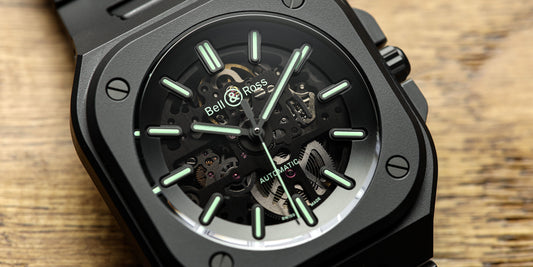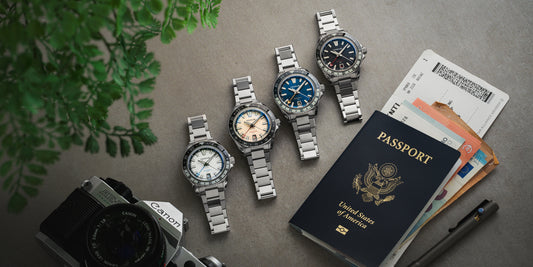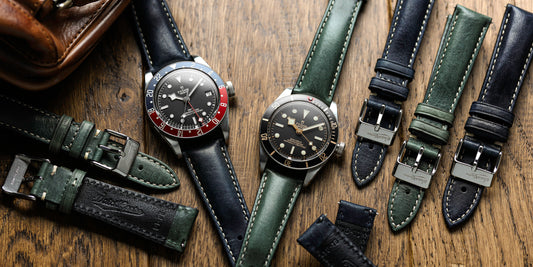Watches come at all different prices and, whilst some are cheap, others seem extortionate. However, you get what you pay for, and some things are just more expensive for good reason, but what sets these watches out above the rest enabling people to justify the high price?
How long does it take to design a watch?
Some watches simply take years to design, engineer and perfect. It can take many different teams of people to engineer unique watch movements and to make sure everything works properly and is up to a high standard. Perfecting new movements is no mean feat and requires incredibly attention to detail. The movement is effectively similar to a car engine, it’s a must-have for a functioning watch and there’s so much to consider. First things first, does it function? You have many components such as the main plate, bridges and balance wheel all holding the moving components in place. The main plate essentially serves as the base supporting all other pieces. The bridge is the structural component that attaches the man plate to the overall frame whilst the balance wheel rotates back and forth to regulate the balance spring. Another consideration is aesthetics. Believe it or not some watch movements are designed purely around how they look, which makes perfect sense if a glass back is part of the watch design. The more you go into it the easier it is to understand how this all begins to get expensive!
How much do watch materials cost?
It goes without saying really, the higher quality and more expensive your watch is, the higher quality materials are required. With higher quality comes cost and these can also be difficult to get hold of and work with. On top of that the skill required to fashion these materials into an exquisite timepiece further increases the price of the finished watch. A prime example of this is Rolex. They use 904L stainless steel in all their collections. This material is incredibly hard and wearing, tough, long-lasting, and yep you guessed it, expensive to get hold of but it ensures all their pieces are exquisite and timeless.
 Rolex Datejust. Image Credit: WatchGecko
Rolex Datejust. Image Credit: WatchGecko
You can visibly observe the difference between a luxury watch and a less expensive one. All materials will be finished to a high standard, for example, the case will have been expertly brushed and polished. Everything will be fitted seamlessly together and presented immaculately oozing the quality feel you’ve come to expect of all high-end watches. And as you can imagine this takes some expertise only acquired by highly trained artisans.
In-House Production vs Outsourcing:
Smaller micro-brands and those targeting a more affordable market will outsource many of their watch functions. Often casing will be produced in Asia and movements outsourced from third-party suppliers such as ETA or Miyota. The design costs can be avoided using these suppliers and allow watches to be sold at a much more affordable price. There is some snobbery where it is claimed that in-house movements are far more accurate but, to be honest, suppliers such as ETA have been around for many years and are well-known for what they do. They produce some superb watch movements that are used in several well-known watches. As they have been around for so long, I would personally be reassured that they are expert at their craft by now. Quite simply there is no guarantee that an in-house calibre is going to perform better simply because it is produced in-house.
 Geckota Chronotimer Chronograph watch with a Miyota 6S21 Chronograph Movement
Geckota Chronotimer Chronograph watch with a Miyota 6S21 Chronograph Movement
The most well-known brands such as Rolex will devise in-house movements and aim to push the boundaries of what is possible in the art of watchmaking. As can be imagined it’s takes years and a huge team of people to design and engineer complicated movements, create prototypes and then there’s the time consuming job of finishing the dial, perfecting the cases and ensuring that each watch is finished to and exquisite standard. Again, this doesn’t come cheap, and you pay for all of these expertise when purchasing your timepiece. However, it is this complete control of quality and materials that help companies maintain reputation and standard which drives prices up.
The Label:
There’s a lot to be said for a watch that’s been produced entirely in-house. With in-house exclusivity comes the big brand name e.g. Rolex. The name in itself immediately gives the watch the luxury label and, as we’ve come to know, luxury comes at a cost. What’s good to note is that these watches hold their value due to their in-house ingenuity and costly materials. Luxury watches tend to be a far more emotive purchase so manufacturers do everything they can to appeal to the purchaser’s passion.
Quite often with a large luxury brand there is more demand than supply. A perfect example of this is, again, Rolex. There is a waiting list for most of Rolex’s watches and generally you can expect to wait anything from a month to five years (yes you read that right!) before you can get your hands on your beloved timepiece. Rolex have ingeniously marketed the brand to scream exclusivity and it seems, even today, everyone has a Rolex on the wish list.
 Rolex Explorer on the Phalanx Classic Bond by Geckota. Image Credit: WatchGecko
Rolex Explorer on the Phalanx Classic Bond by Geckota. Image Credit: WatchGecko
The Movement Type:
A mechanical or automatic watch will be significantly higher priced than a quartz. There are a few different factors as to why these movements are generally more expensive.
Firstly, mechanical watches are generally sold in much smaller quantities and exclusivity drives cost. It is generally collectors/enthusiasts who opt for a mechanical watch over a quartz so equally the demand is also arguable not as high, however, this doesn’t mean that people do not value these watches, in fact, it’s quite the opposite.
Secondly a quartz watch is slightly cheaper to manufacture and as the quartz movement is so robust the warranty claims are small whereas a mechanical watch is much more likely to need a warranty so the cost of this is also factored into the watches retail price.
Research and Development:
Perhaps one of the most overlooked and underrated factors that contribute to the cost of a watch. Luxury brands are considered luxury for a reason. Big brands will spend millions a year on improving and manufacturing new functions to keep buyers interested so understandably they need to make this worthwhile. Just one single movement can take up to 5-7 years to develop and can cost anywhere from £5 million plus! Furthermore, those who are luxury buyers expect their timepieces to tick all the boxes with no exception.
Are expensive watches worth it?
So, the question remains, are the expensive watches worth it? Personally, I would say yes. If you truly are a watch enthusiastic and can afford to spend that little bit more (it doesn’t have to be a Rolex!) you won’t regret, it. Remember that you are not just paying for a watch, it’s all about quality and aesthetic. The higher quality your timepiece is considered the more it will hold (or even gain) value.
That being said some of the more affordable timepieces will withstand the test of time just as well and if you’re looking for something more day-to-day there are some fabulous micro-brands out there who cater for just that. At the end of the day, it all comes down to why you are looking to buy a watch and what you are looking for in your perfect timepiece.





